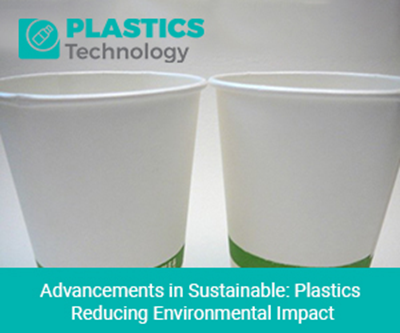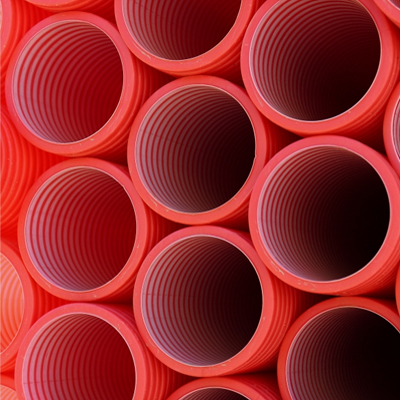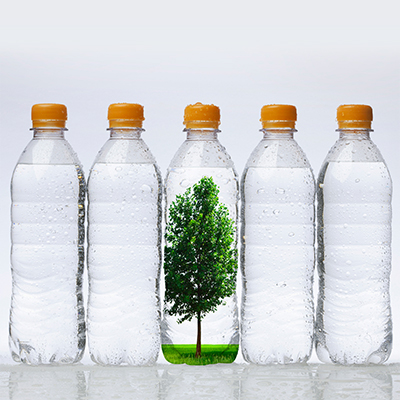Advancements in Sustainable Plastics: Reducing Environmental Impact

Plastics have indeed transformed our daily lives, providing unmatched convenience and versatility across a multitude of applications. Whether in packaging materials, medical equipment, or consumer goods, plastics have become an integral part of the modern world. However, this extensive reliance on plastics has incurred a considerable environmental toll. Conventional plastics, which originate from fossil fuels, are infamous for their resistance to biodegradation, resulting in pollution and posing substantial threats to ecosystems. Fortunately, in recent decades, dedicated efforts from scientists, engineers, and environmental advocates have been directed toward the development of sustainable plastics aimed at mitigating the environmental issues linked to traditional plastics. In this article, we will delve into the noteworthy progress made in sustainable plastics and their pivotal role in addressing the environmental challenges posed by conventional plastic materials.
Biodegradable Plastics: A Natural Solution
Biodegradable plastics offer a natural solution to a pressing issue. Conventional plastics like polyethylene and polypropylene can endure in the environment for centuries, inflicting lasting damage on ecosystems and wildlife. Biodegradable plastics present a hopeful remedy. Engineered to decompose naturally into innocuous substances, these plastics diminish their environmental impact significantly.
One notable category of biodegradable plastics is bioplastics. These are derived from renewable sources like corn starch, sugarcane, or potato starch. Polylactic acid (PLA), a type of bioplastic, has gained popularity in various applications. PLA is derived from fermented plant starch (usually corn) and is compostable under the right conditions. It is used in packaging, disposable tableware, and even 3D printing.
However, it's essential to note that biodegradable plastics require specific conditions, such as the presence of microbes and the right temperature and humidity, to break down effectively. Proper disposal and recycling of biodegradable plastics are crucial to ensure they fulfill their environmental promise.
Recycling: Closing the Loop on Plastic Production
Recycling is a fundamental aspect of reducing the environmental impact of plastics. While recycling rates have increased in recent years, there's still significant room for improvement. Innovations in recycling technology have played a crucial role in transforming used plastics into high-quality materials for various applications.
One promising trend in recycling is the adoption of closed-loop systems. In a closed-loop system, materials are recycled and reused repeatedly, reducing the demand for new plastic production. Companies are increasingly designing products and packaging with recyclability in mind, making it easier to collect and process used plastics efficiently.
Mechanical recycling, the most common form of plastic recycling, involves cleaning, shredding, and melting plastic waste to produce new products. However, mechanical recycling has limitations, especially when dealing with mixed or contaminated plastics. To address these challenges, chemical recycling has emerged as a promising solution. This process breaks down plastics into their constituent molecules, allowing for the production of new plastics with minimal quality degradation.
Bio-Based Polymers: Tapping into Nature's Potential
Bio-based polymers are a remarkable stride in the realm of sustainable plastics, harnessing the potential of nature itself. These polymers originate from renewable sources such as plants, algae, or bacteria, diminishing the dependency on fossil fuels. Furthermore, the manufacturing process of bio-based plastics typically results in lower greenhouse gas emissions when juxtaposed with conventional plastics.
One of the most well-known bio-based polymers is PLA, derived from fermented plant starch. PLA is used in a wide range of applications, including food packaging, textiles, and even medical implants. Its biodegradability and lower carbon footprint make it an attractive alternative to traditional plastics.
Other bio-based polymers include polyhydroxyalkanoates (PHAs), which are produced by certain bacteria during fermentation. PHAs are biodegradable and can replace conventional plastics in various applications, from packaging to agricultural films.
Advanced Manufacturing Techniques: Minimizing Waste
Advanced manufacturing techniques are changing the way plastics are produced, making the process more efficient and eco-friendly. 3D printing and additive manufacturing are prime examples of these innovations. They allow for precise control over material usage, reducing waste and energy consumption.
3D printing, specifically, is spearheading a revolution within the manufacturing sector. It empowers the crafting of intricate shapes and structures while keeping material wastage to a minimum. This innovative technology finds application in the creation of tailor-made items, prototypes, and even components for the aerospace and automotive sectors. Through its ability to curtail material waste and energy usage, 3D printing plays a pivotal role in bolstering sustainability within the plastics manufacturing arena.
Nanotechnology: Enhancing Plastic Properties
Nanotechnology is causing ripples of transformation in the realm of sustainable plastics, elevating their characteristics. The integration of nanoparticles into plastic matrices, known as nanocomposites, yields materials that are not only more robust and enduring but also consume fewer resources. This advancement not only prolongs the lifespan of plastic products but also curtails their overall environmental footprint.
Nanoparticles can be engineered to provide specific functionalities. For example, the addition of nanoparticles with antimicrobial properties makes plastics safer for use in healthcare settings, reducing the risk of infection transmission. Nanotechnology also plays a role in developing UV-resistant plastics for outdoor applications, further increasing their durability and lifespan.
Eco-Friendly Additives: Prolonging Plastic Lifespan
Additives are substances added to plastics to enhance their performance and longevity. Eco-friendly additives are becoming increasingly important in the quest for sustainable plastics. Antioxidants, for instance, protect plastics from degradation caused by exposure to oxygen and UV radiation. By extending the lifespan of plastic products, these additives reduce the need for replacements and, consequently, the demand for new plastic production.
Additionally, antimicrobial additives are vital for healthcare and food-related plastic applications. They help inhibit the growth of harmful microorganisms on plastic surfaces, enhancing product safety and reducing the risk of contamination.
Circular Economy Initiatives: Reducing Waste and Emissions
Circular economy initiatives are gaining traction within the plastics industry, with a growing emphasis on diminishing waste and emissions. This approach revolves around the strategic design of products and packaging, prioritizing recycling and reusability. Its overarching goal is to minimize waste and mitigate the environmental footprint of plastics by prolonging the utilization of materials for as extended duration as feasible.
Circular economy initiatives involve strategies like product redesign, extended producer responsibility, and the development of closed-loop recycling systems. By creating a more sustainable lifecycle for plastics, these initiatives contribute to a circular and regenerative economy.
Reducing Single-Use Plastics: A Global Effort
One of the most significant steps in reducing the environmental impact of plastics is the global effort to reduce single-use plastics. These items, like plastic bags, straws, and disposable cutlery, often end up in landfills or oceans, posing a severe threat to the environment.
Governments and businesses across the globe have taken decisive actions to confront this challenge. Numerous nations have enforced bans or limitations on the usage of single-use plastics, promoting the adoption of reusable alternatives. The popularity of reusable shopping bags, metal straws, and bamboo utensils is on the rise, effectively diminishing the need for single-use plastics.
Environmental Regulations: Shaping the Future of Plastics
Environmental regulations play a crucial role in shaping the future of sustainable plastics. Governments and international bodies are increasingly implementing stricter regulations on plastics' production, use, and disposal. These regulations are aimed at promoting sustainable practices, reducing pollution, and holding industries accountable for their environmental impact.
For example, the European Union has introduced measures to reduce single-use plastics and promote recycling. Similarly, various U.S. states have implemented bans or restrictions on plastic bags and straws. These regulatory measures drive innovation and encourage businesses to adopt more sustainable practices.
Conclusion: A Sustainable Plastic Future
In conclusion, advancements in sustainable plastics are pivotal in addressing the environmental challenges posed by conventional plastics. Biodegradable plastics, recycling technologies, bio-based polymers, advanced manufacturing techniques, nanotechnology, and eco-friendly additives are all contributing to a more sustainable future with reduced plastic pollution and a lighter carbon footprint.
With the ever-increasing consciousness and consumer appetite for environmentally friendly products, the advancement and embrace of sustainable plastics are poised for an even swifter trajectory. The synergy of technological breakthroughs, stringent regulatory frameworks, and conscientious consumer decisions is poised to chart a course toward a future in which plastics assume a role as a solution rather than a predicament. In this prospective scenario, the environmental footprint of plastics will be significantly curtailed, safeguarding our planet for the well-being of generations to come.



